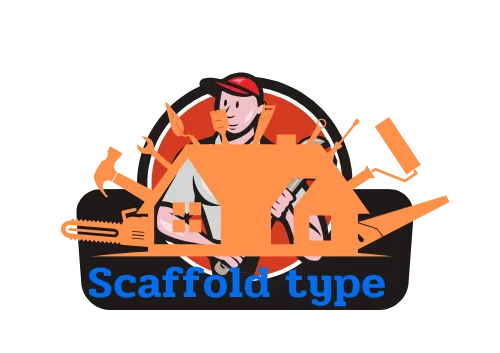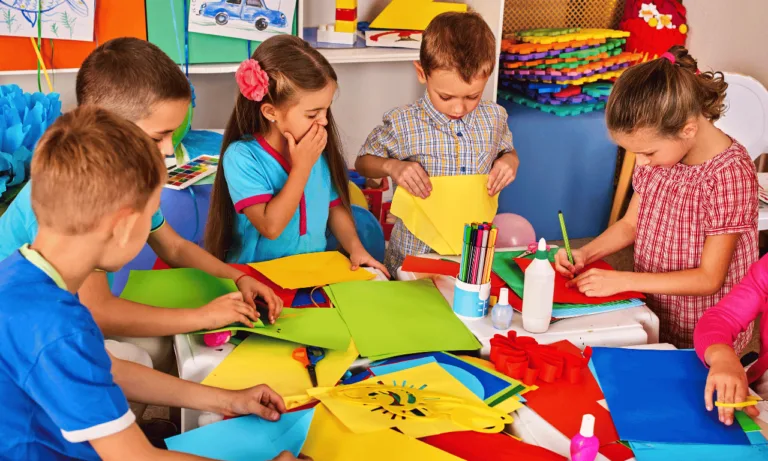Phone:
(+65)8319-0742
Scaffolding has changed how teachers teach and students learn. It’s a way to help students reach their goals by giving them support. Teachers use this method to help students grow and become independent.
This method makes hard topics easier by breaking them down. Teachers use questions, prompts, and feedback to help students solve problems. This helps students understand better and think more deeply.
Teachers know each student’s strengths and weaknesses to give the right kind of help. They use the Zone of Proximal Development to find the perfect balance of challenge and support. Scaffolding is especially helpful for English Language Learners, helping them overcome language and cultural barriers.
Scaffolding helps students become confident learners for life. It slowly gives them more responsibility, preparing them for future challenges. This method helps students with complex topics or new skills in the workforce.
This approach is more than just temporary help. It changes how students learn and grow. Like scaffolding in building, it gives learners a strong base to reach new heights and achieve their goals.
Key Takeaways
- Scaffolding is a powerful way to support students in reaching their goals.
- It makes learning easier by breaking down hard topics into simpler parts.
- Teachers tailor scaffolding to each student’s needs, using the Zone of Proximal Development.
- This method boosts critical thinking, self-regulation, and prepares students for lifelong learning.
- Scaffolding is a key force in education, empowering students to reach their full potential.
Understanding the Concept of Scaffolding in Education
Scaffolding in education helps students learn by giving them support. It bridges the gap between what they know and what they need to learn. Teachers use this method to help students get better at new skills and ideas.
Lev Vygotsky, a famous psychologist, came up with the idea of scaffolding. He talked about the zone of proximal development (ZPD). This is the area where a student can learn with help but not alone.
Teachers find each student’s ZPD to help them grow. By doing this, they help students reach their best potential.
The Definition of Scaffolding in Education
Scaffolding means giving students support to do tasks they can’t do alone. This support gets less as they get better at the skills. Good scaffolding includes:
- Simplifying lessons and gradually increasing complexity
- Explaining concepts through multiple mediums
- Providing exemplars of high-quality work
- Teaching vocabulary before challenging readings
- Giving clear directions and learning goals
- Connecting new lessons to prior knowledge and students’ personal experiences
The Relationship Between Scaffolding and the Zone of Proximal Development
The zone of proximal development is key to understanding scaffolding. It’s the gap between what a student can do alone and with help. Teachers use scaffolding to challenge students just right, not too much.
Scaffolding and the zone of proximal development work together to help students learn. By giving the right support at the right time, teachers help students grow.
Scaffolding is useful in many subjects and for different students. Teachers can make hard tasks easier and give support step by step. By using scaffolding, teachers help students learn and grow, building their confidence and cognitive development.
Key Principles of Effective Scaffolding
Effective scaffolding is key to great teaching and learning. It helps students reach their full potential by giving them the right support and guidance. By following certain principles, teachers can make a learning space that encourages students to take part, learn at their own pace, and follow their own learning paths.
Adjusting to the Zone of Proximal Development
Adjusting teaching to fit what students can do on their own is a big part of scaffolding. This idea comes from Lev Vygotsky’s work. He said the ZPD is the gap between what a student can do alone and with help from someone more knowledgeable. Teachers should plan lessons so students are always learning something new but still get the help they need.
Research shows that just eight minutes of review at the start of a lesson can lead to better grades. This is true for math and learning new words. It shows how important it is to use what students already know to help them learn new things. The Bell Foundation talks about how slowly taking away support, or fading, is important. This lets students learn to do things on their own over time.
Encouraging Active Participation
Getting students to take part in learning is crucial, and scaffolding helps with this. Using things like group talks, hands-on activities, and tech can make students more involved and help them understand better. Studies say good classes have teachers who share new info, ask questions, and give practice tasks. Bad classes don’t ask many questions.
Classes where students answer 80% of practice questions do better in tests. Breaking down new info into smaller bits helps students remember it better. The “I Do, We Do, You Do” method is a good way to get students to join in. Teachers show a skill, practice it with students, and then let students try it alone.
Harnessing Visual Aids
Visual aids like diagrams, charts, and videos are great for scaffolding. They make learning easier and help students remember things better. Tools like graphic organizers help students think things through before, during, or after a lesson. Anchor charts are also useful for remembering info and tasks.
The importance of scaffolding difficult tasks lies in its flexibility; individual scaffolds may include checklists and prompt cards to assist students of varying needs and abilities.
Using visual aids makes learning more fun and reaches different learning styles. scaffoldtype.com says making scaffolding safe, efficient, and meeting standards is key for good results.
| Scaffolding Strategy | Benefits |
|---|---|
| Graphic Organizers | Aids in organizing student thinking before, during, or after a lesson |
| Anchor Charts | Provides visual support in remembering information and tasks |
| Checklists and Rubrics | Breaks down directions into manageable steps and guides students towards achieving desired outcomes |
By using these scaffolding principles, teachers can make a learning space that helps students take charge of their learning. With the right strategies, visual aids, and activities, teachers can help students grow in both school and life.
Scaffolding Strategies for Different Learning Environments
Educators need to adjust their scaffolding strategies for different learning settings. This ensures students get the support they need to do well. By tailoring these strategies to specific ages and situations, teachers can make learning fun and inclusive. This helps students grow and achieve their goals.
Tailoring Scaffolding to High School Students
High school students need scaffolding strategies that match their growing brains and school work. Teachers can use project-based learning to help them explore complex topics. This approach encourages critical thinking and self-exploration.
Techniques like mental modeling and concept mapping engage high school students. They help students understand complex information better. Jerome Bruner, a leading educational psychologist, said scaffolding is key to effective learning. It provides support based on what students know, then gradually reduces it as they get better.
“Scaffolding is a process that enables a child or novice to solve a problem, carry out a task or achieve a goal which would be beyond his unassisted efforts.” – Jerome Bruner
For high school students, breaking tasks into smaller steps is helpful. Using scaffolding strategies like building on what they already know and giving them time to talk helps a lot.
Whole-Class Integration
For whole-class integration to work, teachers must clearly share what they want students to learn. They should use visual aids to help students understand concepts better. Creating a collaborative learning environment is also key.
To make whole-class integration work, teachers should:
- Adjust tasks to meet different learning needs
- Check in with students regularly to see how they’re doing
- Encourage students to help each other
- Use technology to make learning interactive
| Scaffolding Strategy | Whole-Class Integration Technique |
|---|---|
| Clear communication of learning objectives | Display objectives visually and discuss them with the class |
| Utilizing visual aids for conceptual understanding | Incorporate diagrams, charts, and videos to support learning |
| Fostering a collaborative learning environment | Encourage group work, discussions, and peer feedback |
| Differentiating tasks to cater to individual needs | Provide varied resources and activities based on skill levels |
By using these scaffolding strategies, teachers can support the whole class while meeting each student’s unique needs. This approach makes learning inclusive and helps everyone reach their potential.
Implementing Scaffolding Techniques in the Classroom
Scaffolding techniques are key for teachers to help students master tough subjects. They make learning fun and supportive for everyone. Teachers use these strategies to meet the needs of their students.
Pre-teaching vocabulary is a great way to start. Teachers explain important words before a lesson or reading. This helps struggling students understand better and feel more confident.
Templates are another useful tool. They help students organize their thoughts and work step by step. Templates work in many subjects, like writing essays or solving problems. They help students learn in a structured way. In fact, mast climbing scaffolding in building projects is similar to educational scaffolding. Both offer support and make things more efficient.
Rubrics are also important. They tell students what’s expected and how to be successful. Rubrics help students understand their work better and think about how to improve. Teachers use rubrics to give feedback that is specific and helpful.
“Scaffolding is not simply a case of breaking learning down into small steps. It involves helping learners to develop strategies that enable them to take on new learning.” – Pauline Gibbons, Education Consultant
To use scaffolding well, teachers need to plan and tailor their support to each student. Here are some tips to make scaffolding work in your classroom:
- Know what students already know and need help with
- Get students to work together using “Think, Pair, Share”
- Use pictures and hands-on tools to make hard ideas clearer
- Set clear goals and what success looks like
- Show examples of good work to inspire students
| Scaffolding Technique | Benefits for Students |
|---|---|
| Pre-teaching vocabulary | Improves understanding and interest in new topics |
| Utilizing templates | Makes hard tasks easier to manage |
| Rubrics for guided assessment | Helps students understand learning and think about their progress |
| Differentiated instruction | Helps all students have a chance to succeed |
By using scaffolding, teachers can make learning both supportive and challenging. This helps students grow in confidence and skills. As they become more independent, they’re ready for success in school and life.
Benefits of Scaffolding for Student Success
Scaffolding in education has many benefits for student success and a positive learning environment. It gives students the support they need to handle tough content with ease. This leads to better understanding and mastery of the material.
Mastery of Challenging Content
Scaffolding helps students overcome hard concepts and skills. A study shows that different supports in class can engage students, especially those learning English. It breaks down tough ideas into simpler parts, helping students remember and feel confident.
Enhanced Understanding
Scaffolding makes complex ideas easier to grasp by filling in learning gaps. Having a teacher who knows more helps students learn more. Tools like visual aids make it easier for students to understand, improving their enhanced understanding. Quick installation scaffolds in building are like educational scaffolding, helping students learn fast and well.
Gradual Release of Responsibility
Scaffolding lets students take more control of their learning over time. It starts with the teacher showing the skill, then students practice together, and finally, students do it on their own. This helps students own their learning, getting ready for school and lifelong learning.
“Scaffolding is similar to the Zone of Proximal Development Theory, aiding children in acquiring new skills with a teacher’s help.” – Jerome Bruner, psychologist
Preparation for Lifelong Learning
Scaffolding helps with current learning and prepares for the future. It encourages students to participate and talk with teachers. This makes students curious and ready to learn on their own, preparing them for lifelong learning.
A scaffolding-rich environment is positive and supportive. It encourages students to share, ask questions, and try new things. This kind of support is key for student success and a love for learning that lasts beyond school.
Conclusion
The scaffolding process in education is a game-changer. It helps learners reach new heights in understanding and success. At the start, teachers offer a lot of support to help students with new concepts and skills.
As students get more confident and understand better, teachers slowly take away the support. This lets students stand on their own with their new knowledge.
Teachers use scaffolding in different classrooms to make sure every student can do well. They make sure all learners, no matter their abilities or how they learn best, get the help they need. They use methods like breaking down hard tasks, using pictures, and working together to make learning fun and active.
Scaffolding does more than just help in class. It helps students master tough topics and understand them deeply. This builds their confidence and skills for learning on their own for the rest of their lives.
By slowly giving them more responsibility, students learn to be independent and self-reliant. Scaffolding is more than just a teaching tool. It’s a way to help students grow and reach their full potential.
In short, scaffolding is a powerful way to help students succeed. By using scaffolding and making it fit different classrooms, teachers can change lives. They can make a generation of students who are confident and ready for anything. With scaffolding, we’re not just building a strong base for learning. We’re also creating a brighter future for all students.





















